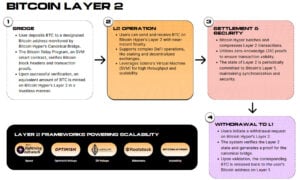Oracle ties OpenAI deal to data-center strategy
Oracle’s new leadership is standing in front of a $300 billion bet that could reshape the company’s future, or crush it.
The dual CEOs, Mike Sicilia and Clay Magouyrk, are defending a massive AI push built on new data centers and an aggressive partnership with OpenAI, according to The Wall Street Journal.
The pair says this is about giving businesses real computing power, bundled software, and analytics that make artificial intelligence actually usable.
Sicilia, who led Oracle Industries before taking the top job last month, said the company is “really in a unique situation to deliver what we call applied AI,” explaining that this includes infrastructure, analytics, and enterprise applications.
Magouyrk, who previously ran Oracle’s cloud infrastructure arm, said the company’s new AI platform will tie all of that together. Their pitch comes as investors question whether this huge AI build-out is sustainable or just another bubble waiting to pop.
Oracle ties OpenAI deal to data-center strategy
Shares of Oracle jumped more than 40 percent last month after the company reported a surge of $317 billion in future contract revenue for the quarter ending August 31. Much of that came from its five-year, $300 billion deal with OpenAI, which executives insist will anchor the next phase of its cloud business.
But analysts are already uneasy. Sam Altman, OpenAI’s chief executive, has admitted the company won’t turn a profit until 2029, which makes Oracle’s dependence on that partnership look risky.
Moody’s warned last month that Oracle’s balance sheet could come under strain from the cost of its new AI data centers and its reliance on OpenAI to fill them. Earlier this month, Oracle stock dropped as much as 7.1 percent before bouncing back, following a report that margins on renting out Nvidia chips were razor-thin.
Still, both Sicilia and Magouyrk plan to defend the math when they meet investors at Thursday’s Investor Day, arguing that scaling will make the business profitable.
Magouyrk said, “Margins are the wrong way to look at the business. I understand the economics of each marginal unit and how this works out as it scales, and that actually ends up being a very profitable business.”
Balaji Abbabatulla, an analyst at Gartner, said Oracle’s playbook is to sell entire ecosystems of AI tools rather than single products. “They’re not going to be able to show clear returns if they don’t go for those large and multibillion-dollar deals,” he said.
That approach means combining AI infrastructure with databases, enterprise-resource-planning tools, and HR software so corporate clients can buy it all from one vendor.
Margins, inference, and debt weigh on investor faith
Another piece of Oracle’s plan is AI inference; the process of running models after they’re trained. Most infrastructure spending today goes into training, but inference is where customers actually use models and generate results.
Magouyrk said Oracle can let clients “do their inferencing right alongside their data with the best models.” He claimed usage could increase a thousandfold once customers adopt its new AI Data Platform.
Shawnna DelHierro, chief information officer at SoundHound AI, said her company already uses Oracle’s cloud to train and run models, handling over one billion queries per month. SoundHound also uses Oracle’s back-office software and picked the firm because it offered “a true partner” and “zero latency,” she said.
Still, many enterprises complain they haven’t seen quick returns from AI even as they pour money into it. Oracle has added more debt to stay ahead, issuing $18 billion in bonds in late September to fund its AI data-center build-out, including the massive Stargate project with OpenAI.
Magouyrk pushed back on fears about debt, saying that if you combine Oracle’s new contracts, revenue projections, and cash flow, the picture looks “much rosier.” He added that Oracle isn’t betting everything on one client. “Pretty much all of the big model providers use our cloud in one form or another,” he said. “You can’t get more than 100 percent of the Pokémon.”
If you're reading this, you’re already ahead. Stay there with our newsletter.
You May Also Like

Mastercard Goes All Into Web3 Via Acquisition of Zerohash for Nearly $2B

Bitcoin Hyper Coin Review 2025 — Is it Safe to Invest in? Everything You Need to Know
